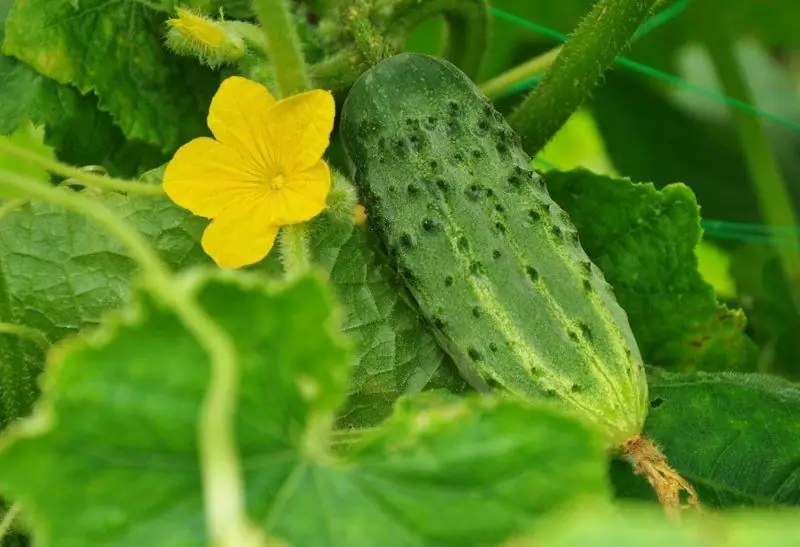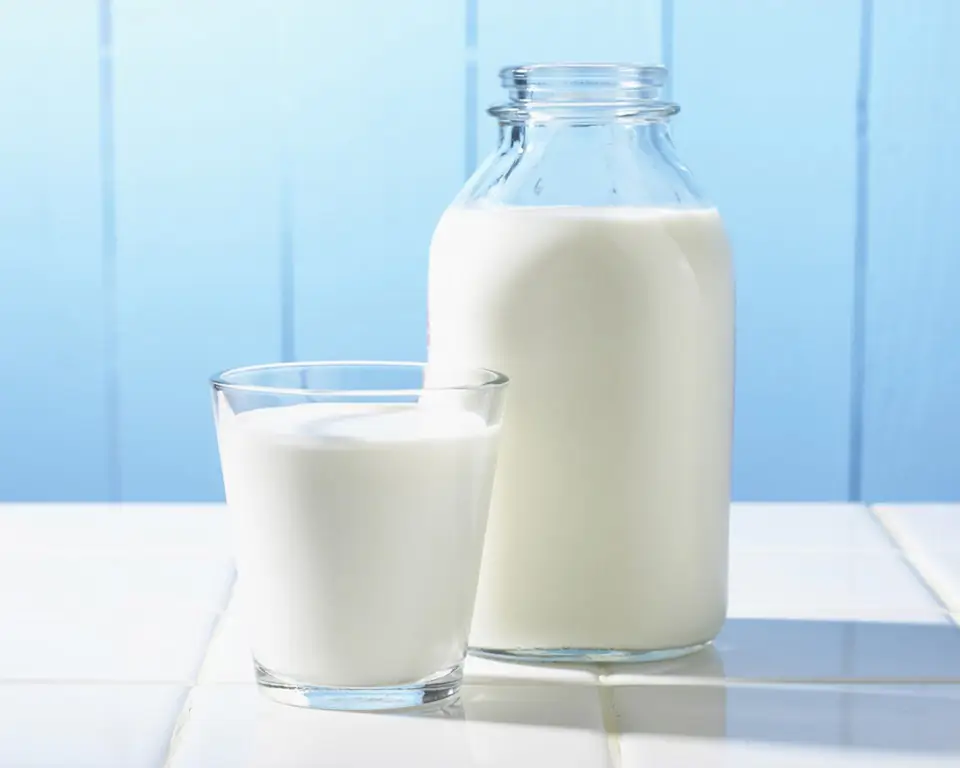
Table of contents:
- Author Bailey Albertson [email protected].
- Public 2023-12-17 12:53.
- Last modified 2025-01-23 12:41.
Spraying cucumbers with milk with iodine: fighting for the harvest

In the arsenal of adherents of natural farming, one of the main places is occupied by such drugs as iodine and milk. They are also actively used for spraying cucumbers. Let's figure out what the folk method will give and whether it is necessary to run into the garden and urgently irrigate the plantings.
Why are cucumber plantings treated with milk and iodine?
Iodine is a reliable antiseptic widely used in medicine. Experienced gardeners recommend processing cucumbers with this widely available, budgetary and environmentally friendly product for
- protection against fungal infections in the early stages of their development;
- increasing the timing of fruiting;
- rejuvenation of cucumber lashes;
- restoration and revitalization of the vitality of the plant;
- increasing the number of ovaries.
By processing cucumbers with milk, you can solve several problems at once:
- nourish plants with calcium, potassium, magnesium, iron, etc.;
- protect against diseases and pests;
- saturate the soil with useful substances that enhance microbiological activity.
Milk and dairy products contain lactose. It is she who contributes to the enveloping of cucumber leaves with an almost imperceptible film, which prevents the penetration of pathogenic microbes.

After processing with milk and iodine, cucumbers are not saturated with harmful chemicals, they can be eaten immediately
How to properly handle cucumbers with milk and iodine
For disinfection, as well as for saturation of cucumber seeds with iodine, they are soaked in a solution of this element before planting. They do it as follows:
- One drop of a 5% alcohol solution of iodine is added to 1 liter of water.
- Immediately before sowing, the seeds are kept in this solution for 2-3 hours.
- Then they are slightly dried and sown.

Iodine improves metabolic, redox processes in tissues, as a result of which the immunity of plants improves
Processing cucumber crops with a solution of iodine and milk helps prevent the development of fungal diseases. To prepare the working composition, the following components are required:
- water (10 l);
- milk or whey (1 l);
- grated laundry soap (1 tbsp.spoon)
- iodine (30 drops).
The first spraying is recommended 3 days after planting cucumber seedlings in a permanent place, and subsequent spraying every 10 days during the season.

After spraying cucumbers with a milk-iodine solution, you can water them only after a day
To protect against disease
If the cucumber leaves begin to turn yellow, the ovaries die off, uncharacteristic spots appear, indicating the defeat of fungal infections, then for several days the plants are recommended to be treated with the iodine-milk solution described above. Experienced gardeners advise using iodine together with urea. Add to 10 liters of water:
- iodine (20 drops);
- milk or whey (2 l);
- urea (4 tablespoons).

If the disease is noticed on time, then spraying cucumbers with an iodine-milk solution without additional chemical treatment can protect your crop
To cope with the root rot of cucumbers, a characteristic feature of which is the browning of the root collar of a plant, the following procedure will help:
- For 1 teaspoon of iodine add 2 teaspoons of water.
- With a cotton swab, apply the solution to the root zone of the stem to a height of about 10 cm.
The treatment is carried out 2-3 times every 5 days until the plant is completely healed.
Iodine and milk feeding
Cucumbers need microscopic doses of iodine. To feed this element, add 3-4 drops of iodine to 10 liters of settled water and water the plants. Such an addition to the cucumber diet will improve the taste of the fruit and contribute to the accumulation of vitamin C.

Milk and iodine dressing is especially useful for cucumbers that grow on poor soil that contains practically no trace elements.
Video: feeding cucumbers with iodine and milk
The use of such available products as iodine and milk will have a beneficial effect on the quality and quantity of the cucumber crop, help you save on the purchase of expensive fertilizers and pesticides.
Recommended:
How To Make Yogurt At Home - Recipes For Making Drinking, Greek And Other Options From Milk (including Goat Milk), In And Without A Yogurt Maker, Video And Reviews

Properties and types of yoghurts. How to choose products. Homemade recipes in a yogurt maker and without
How To Check The Quality And Naturalness Of Milk At Home: Checking With Iodine And Other Methods, Determining The Freshness + Photos And Videos

How to determine the freshness and quality of milk at home: several proven methods. Criteria for assessing the quality of milk powder
Why You Can't Why You Can't Wash Floors On Friday: Signs And Facts

Why you can't wash floors on Friday: signs and superstitions. The opinion of the mystics and Orthodoxy
Boric Acid Spraying For Tomatoes And Cucumbers

Why do cucumbers and tomatoes need boric acid? When and how top dressing is applied, spraying is carried out
Why Can't You Say "last", But You Need "extreme"

Why is it considered that one cannot say "last", but "extreme" is necessary. How to speak correctly from the point of view of the Russian language
